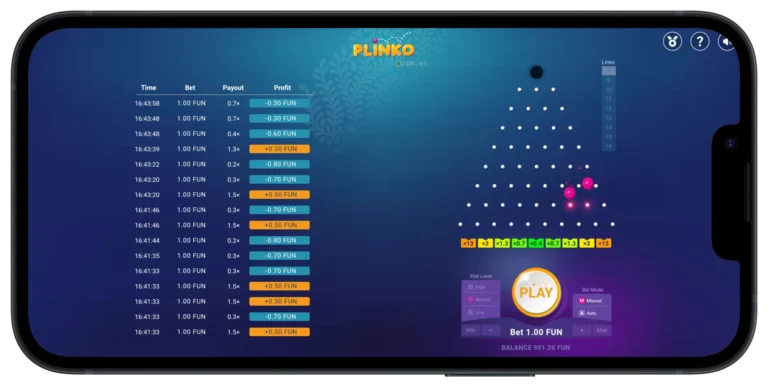Plinko, the iconic game known to many from its origins on television game shows, has undergone a fascinating transformation over the years. What once was a staple of TV entertainment has now successfully transitioned into the digital age, captivating audiences on various devices. This article explores the journey from TV to tablets and how the plinko online game has surged in popularity.
The Origins of Plinko on Television
Plinko originally gained fame as a featured game on popular TV game shows such as “The Price Is Right.” Contestants would drop a small disc down a pegged board, with the disc bouncing unpredictably before landing on different prize slots. The suspense, randomness, and simplicity made Plinko a beloved segment, engaging millions of viewers.
Digital Evolution: Bringing Plinko Online
With the rise of mobile technology and tablets, game developers sought to bring classic games like Plinko to a broader audience in a more accessible format. The transition from TV to tablets meant adapting the gameplay for touchscreens while retaining the original’s charm and excitement.
Thanks to advanced graphics, smooth animations, and interactive elements, the Plinko online game now offers players an immersive experience they can enjoy anywhere, anytime. This shift has introduced the game to younger generations who may never have seen it on television but are familiar with gaming on their devices.
Why the Rise of Plinko Online Game Is Significant
The popularity surge of the Plinko online game highlights a broader trend in how classic games are being reimagined for the digital era. Tablets and mobile devices allow for:
- Easy access without the need for a TV show or studio
- Instant play without lengthy setups or broadcasts
- Social sharing features, allowing friends to compete or share scores
The transformation from TV to tablets not only preserves the legacy of Plinko but also enhances its reach and appeal, ensuring it remains relevant in a competitive gaming market.
Future Outlook: What’s Next for Plinko?
As technology continues to evolve, the Plinko online game is poised to incorporate more advanced features like augmented reality (AR), multiplayer modes, and personalized challenges. These innovations could further deepen player engagement and maintain Plinko’s position as a favorite pastime.
Conclusion
The journey from TV to tablets marks an exciting chapter in the history of Plinko. What began as a simple game on television has flourished into a dynamic digital experience. The rise of the Plinko online game is a testament to how classic entertainment can be reinvented for modern audiences, blending nostalgia with innovation.


